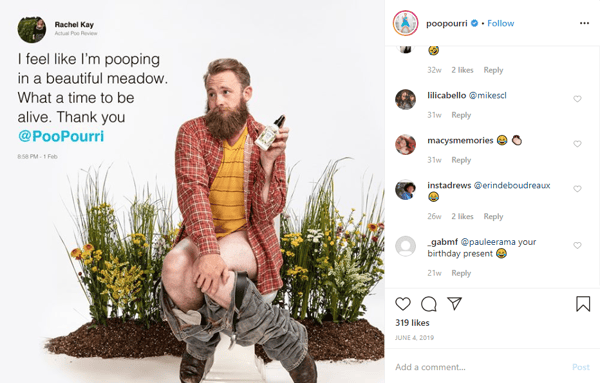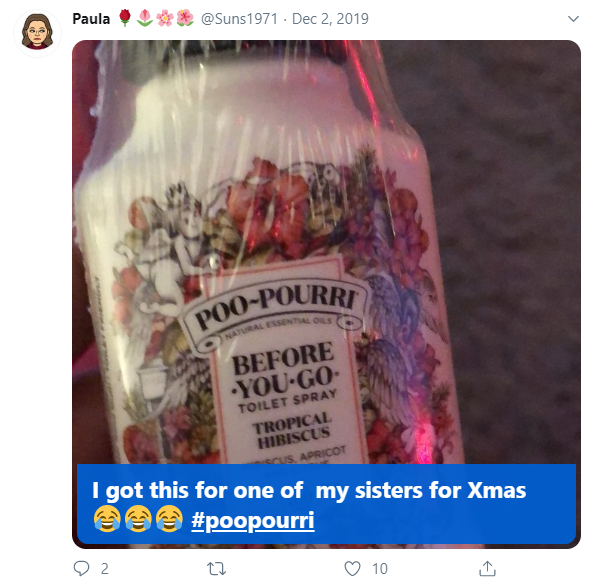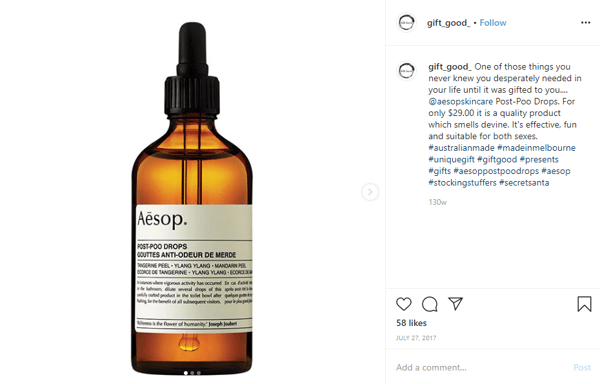How do you make a fortune off of someone’s trip to the bathroom? Marketing, of course. Air fresheners have long been sold as bathroom refreshers, but it wasn’t until recent years that products like Poo-Pourri and Air Wick’s VI-Poo have reinvented the ways in which air fresheners are marketed and sold. The truth is that there is little difference between these products and more traditional air fresheners sold as room sprays, but the products have raked in millions of dollars to their respective owners thanks to one, major reason: how they’re marketed to consumers.
Whether it be in carefully calculated media designed for viral shareability on social media, or clever packaging and ad copy that gets consumers talking about their products with little advertising, bathroom refresher products have managed to earn companies millions of dollars. But these products are not necessarily new, as air fresheners have been packaged and sold for decades. What makes them different is in their marketing and packaging, even if the products themselves are similar to any other air freshener (both natural and chemical) that you might find on shelves at your local supermarket.
Poo-Pourri and the power of viral media
Suzy Batiz, the founder and CEO of Poo-Pourri, went bankrupt twice before she became one of the wealthiest self-made women in the country, according to Forbes. The CEO earned her fortune selling toilet refresher sprays designed to mask the odor of your trip to the bathroom by creating a “protective film” that traps bad odors in the toilet.
In short, the product is a new way to market air fresheners, but it’s sold tens of millions of bottles since launching back in the early 2010’s. The company’s rise to fame is not unlike the story that many celebrities and famous products share today: viralability on social media. The company’s first advertisement, a lengthy commercial called “Girls Don’t Poop” featuring a young woman with a prim and proper British accent talking about using the product, has been viewed and shared hundreds of millions of times since the company released the ad back in 2013.
More importantly, it helped increase brand recognition tenfold. The company had already sold millions of versions of the product when it launched the campaign, as it says within the ad itself, but its branding and use of funny bathroom puns helped the product skyrocket as both a gag gift and a household utility. Plus, it retailed at a price far higher than competing air fresheners like Lysol or Febreeze ever could have—with some products in the $30 range for refills.
Air Wick’s VI-Poo & packaging
While clever advertising and pretty packaging (one of Poo-Pourri’s products is covered in glitter and is frequently sold out) are a decent way for brands to sell mass amounts of their products, the quality is what gives them their longevity as a brand that will last. Poo-Pourri has managed to retain millions of loyal customers with its good formula and an angle that the aerosol-free product is safe to inhale. Air freshener companies like Air Wick know that their aerosol products keep some consumers away, so switching to spray-bottle formulas in their toilet sprays was an easy way to open the floodgates for new consumers to buy the products. Plus, they were already known as a household name.
But again, the products needed a humor angle in order to spark initial consumer interest. Many consumers who purchased the products as a gag gift ended up coming back to buy them again after realizing they worked as air fresheners. Air wick’s product packaging is simple and reminiscent of its other products, making it easy for consumers to identify as a brand in stores. Plus, it’s funny product name (VI-Poo) takes a page out of Poo-Pourri’s book and capitalizes on the endless bathroom jokes that can be made about the product. It’s in the humor that VI-Poo found success, as its ability to be given as a gag gift shot its sales up significantly during the holiday season—something the brand would not be able to say about any of its other air freshener products.
Aesop’s high-end version
Where grocery-store brands like Air Wick have found that their products are successful as a gag gift, others, like Aesop, have found that toilet spray could easily be marketed as a luxury item. Air Wick sells its products for around $6 in stores and online at retailers like Amazon. Its colorful packaging and toilet puns make it popular among the masses as both a household utility and a funny gift, but products like Aesop’s Post-Poo drops, which come in Aesop’s signature dark brown bottle and simple labeling, retail for $29 per bottle at high end retailers like Nordstrom.
Brands like these do more than just sell the same product in a different bottle, though, as one of Aesop’s selling points is actually in its unique scent and cruelty-free, vegan label. The product, which only comes in one fragrance, uses essential oils and fragrances like ylang ylang and mandarin peel to create a unique but effective mixture of botanical and citrus scents. Competing products at a lower price range tend to focus on just one fragrance, ranging from floral, to citrus, to sweet options.
Packaging, however, is its biggest selling point. In the same way that many consumers of skin care products will purchase products that they think are higher end simply because they come in a glass bottle vs. a plastic bottle, Aesop recognizes that its average consumer is more likely to choose products that make good decor in addition to working well. The brand is careful about its reputation, only working with hand-picked restaurants and hotels that go alongside its luxury branding. Plus, its simple labeling and signature brown bottle packaging is more than just beautiful on a bathroom counter—it’s highly recognizable.
Active ingredients
Because toilet spray products are created to be used as air fresheners and are kept in spray bottles rather than in aerosol cans, they only need a couple of ingredients to be able to work well. Poo-Pourri lists only a few ingredients in its products—water and a blend of essential oils—that are used as fragrances. On this route, you have pretty much total freedom for what you want to use in your own version of the product. Aside from water, an obvious required ingredient in the product, here are a couple of ingredient ideas to be used as fragrances that are listed through Chemberry:
Lemon
There are three fragrance ingredients available through Chemberry that are used in both personal and home care products, and all three are from Emerald Kalama Chemical which is a chemical company based out of Vancouver, Canada. The three products are called Kalama® C-9 Aldehyde, Kalama® C-6 Aldehyde FCC, and Kalama® C-12 Lauric Aldehyde, and each have their own notes of rose , floral, and fruity.
Floral
This fragrance, called Kalama® Cypriol, is for use in home care products and has oriental-floral notes that add a sweet, almond-spice fragrance with floral notes to home care products. The fragrance is also from Emerald Kalama Chemical. Meanwhile, this earthy fragrance—also from Kalama Chemical—adds a deep, earthy, woodsy fragrance to home care products. For products marketed toward men, Kalama® Vetimoss® might be an option as tree fragrances are often associated with masculinity.
Disclaimer: The information provided (on our blog) is accurate to the best of our knowledge, however, there may be errors. As a neutral organization, we at Chemberry do not advocate or promote certain products or ingredients on our platform as better than others. The Site may contain (or you may be sent through the Site) links to other websites or content belonging to or originating from third parties or links to websites and features in banners or other advertising. Such external links are not investigated, monitored, or checked for accuracy, adequacy, validity, reliability, availability or completeness by us. For more information on our blog, contact social@chemberry.com





